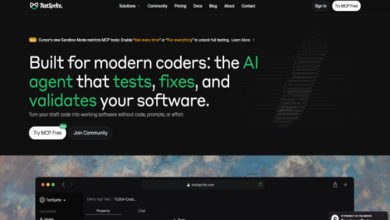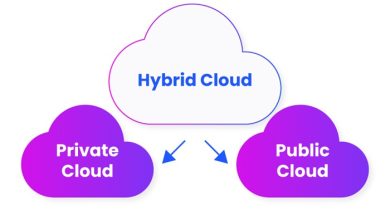
In the realm of IT projects, one of the most challenging yet essential tasks is building consensus among stakeholders. From project managers and IT consultants to business executives and end-users, every individual involved in an IT project often has different priorities, perspectives, and expectations. However, the success of a project depends on the ability to bring these diverse viewpoints together to create a shared vision and strategy. Effective stakeholder collaboration is key to achieving this consensus, ensuring smooth project execution and successful outcomes.
Understanding the Importance of Consensus
Building consensus is not simply about getting everyone to agree on a single approach—it’s about fostering a collaborative environment where all voices are heard and valued. When stakeholders agree on the project’s objectives, strategies, and expected outcomes, it becomes easier to make decisions, resolve conflicts, and stay on track. Consensus helps prevent miscommunication, reduces the risk of project delays, and ensures that everyone works toward a common goal.
In the context of IT projects, this collaborative approach is even more important due to the technical complexity and the potential impact of technology on the entire organization. Without consensus, it’s easy for the project to veer off course, leading to wasted resources, unmet expectations, and ultimately, project failure.
Best Practices for Building Consensus in IT Projects
Building consensus is a multi-step process that requires clear communication, patience, and a strategic approach. Below are some best practices that can help facilitate stakeholder collaboration and ensure a successful IT project outcome.
1. Establish Clear Goals and Objectives
At the outset of any IT project, it’s crucial to define clear goals and objectives. What is the purpose of the project? What problems is it trying to solve, and what are the expected outcomes? These objectives should be well-articulated and shared with all stakeholders from the very beginning.
By establishing clear goals, you ensure that everyone is aligned from the start and understands the project’s value and its contribution to the organization’s success. This clarity helps stakeholders focus on the bigger picture and reduces the likelihood of miscommunication or conflicting expectations.
2. Engage Stakeholders Early and Often
Building consensus isn’t something that can be achieved in a single meeting. It requires ongoing engagement with stakeholders throughout the project. This engagement starts early in the planning phase, when stakeholders should be included in discussions about project goals, timelines, and deliverables.
It’s important to involve a diverse group of stakeholders—ranging from business leaders to technical teams and end-users—early on, so their insights can be integrated into the project’s direction. Regular updates and feedback loops are also essential throughout the project to ensure continued alignment and address any concerns as they arise.
3. Foster Open Communication
One of the most significant challenges in IT projects is ensuring clear, open communication among all stakeholders. In technical projects, it’s common for jargon and complex concepts to cause misunderstandings between technical and non-technical participants. To overcome this, it’s important to foster an environment where stakeholders feel comfortable asking questions, voicing concerns, and offering suggestions.
Transparency is critical in this process. Keeping everyone informed about the progress of the project, potential risks, and any issues that arise helps maintain trust and ensures that decisions are made based on the most up-to-date information.
4. Listen Actively to Stakeholders’ Concerns
Active listening is an essential skill for building consensus. IT projects can be highly technical, and stakeholders may have concerns or reservations that aren’t immediately apparent. By actively listening to these concerns and demonstrating empathy, you create an atmosphere of collaboration where stakeholders feel valued and heard.
It’s important to go beyond simply listening to what stakeholders are saying and take the time to understand their underlying concerns. This allows for more effective problem-solving and ensures that everyone’s needs are addressed as the project progresses.
5. Find Common Ground and Build on It
In most IT projects, stakeholders will have differing priorities. Business leaders may be focused on cost-effectiveness and efficiency, while technical teams may prioritize system reliability and scalability. To build consensus, it’s essential to identify common ground and align everyone’s efforts toward shared objectives.
By focusing on what unites stakeholders—such as a desire for project success or a commitment to improving business processes—you can facilitate collaboration and keep the project moving forward. In some cases, compromises will be necessary, but finding a balance that satisfies most stakeholders is often possible with careful negotiation.
6. Empower Stakeholders with Decision-Making Authority
Consensus-building isn’t just about getting buy-in; it’s also about giving stakeholders a sense of ownership in the project. When stakeholders are empowered to make decisions and contribute to the project’s direction, they’re more likely to feel invested in the outcome.
Giving decision-making authority to key stakeholders—within predefined limits—helps to streamline the process, reduce delays, and prevent bottlenecks. It also fosters a sense of accountability and encourages stakeholders to take a proactive role in the project’s success.
7. Document Agreements and Decisions
As consensus is built, it’s important to document all agreements, decisions, and changes to ensure that everyone is on the same page. This documentation serves as a reference point throughout the project and can help prevent misunderstandings or disputes down the road.
By keeping a clear record of the decisions made, stakeholders can easily review past agreements and ensure that the project stays aligned with its original objectives. This also provides a transparent process that stakeholders can look back on if any disagreements arise in the future.
8. Maintain Flexibility and Adaptability
Finally, it’s important to recognize that consensus-building is not a static process. As the project progresses, new challenges, insights, and ideas may emerge. Being flexible and adaptable to change is essential for maintaining consensus and keeping the project on track.
Stakeholders should be encouraged to remain open to new ideas and to adjust their expectations as the project evolves. By staying flexible and working collaboratively to address unforeseen issues, stakeholders can help ensure that the project remains successful, even in the face of challenges.
The Role of IT Consultants in Building Consensus
IT consultants play a pivotal role in facilitating consensus-building among stakeholders. Through their experience and expertise, they can guide conversations, mediate disagreements, and ensure that the project remains focused on its goals. Their ability to communicate clearly and bridge the gap between technical and non-technical stakeholders is key to fostering collaboration.
Professionals like Derek Gleeson, with a wealth of experience in IT consulting and solution architecture, are adept at navigating complex stakeholder dynamics. With their strategic approach, they can help organizations build consensus while ensuring that the IT solution aligns with business objectives and addresses technical challenges effectively.
Conclusion
Building consensus in IT projects is a critical step toward achieving project success. By engaging stakeholders early, fostering open communication, and finding common ground, project teams can ensure that all voices are heard and that the project stays on track. IT consultants, through their experience and expertise, play a vital role in facilitating this collaboration, ensuring that IT projects deliver the desired results.
By following best practices for stakeholder collaboration, organizations can successfully navigate the complexities of IT projects and drive outcomes that meet both technical and business goals.




